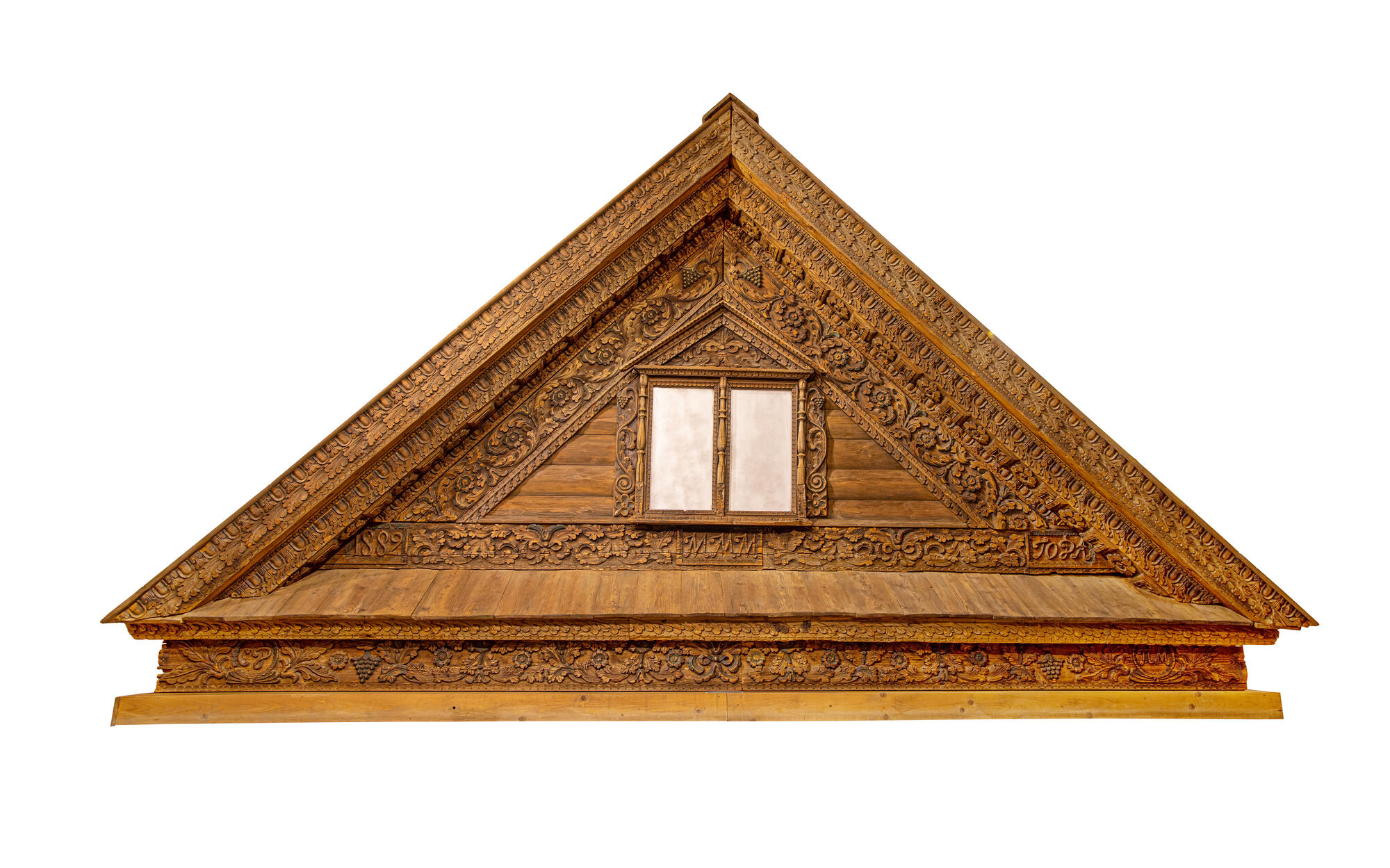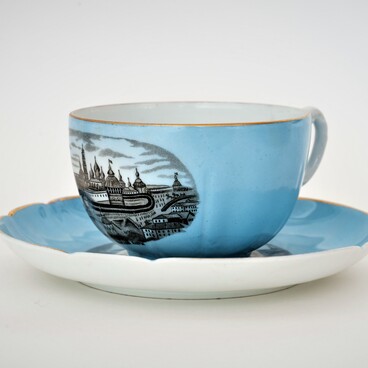In the 19th century, peasant architecture was influenced by the development of shipbuilding in villages located along the banks of the Volga River. The ties between the art of decorating ships and house decorations are reflected in the old carving terms: “ship carving”, “barge carving”, “vessel carving”. The “blind carving”– a high relief on a solid, flat background which was called “earth” — was also popular. Traditionally, the same craftsmen created carved patterns on izbas and ships: in winter they worked on the construction of ships, and in spring they went to villages to build and decorate peasant dwellings. In Nizhny Novgorod Governorate, carpenters from Vladimir, the so-called “arguns” and “yakushi”, were famous for their great skills.
The Sergiev Posad Museum-Reserve houses many examples of architectural 19th–century carvings from the Volga region. Those include various details used as house decorations: carved bargeboards — the boards fastened to the projecting gables, cornice and front beams, pilasters, window frames, arches of wicket gates and an entire pediment — the upper part of the house.
The pediment of a peasant izba created by a folk master Mikhail Malyshev is an example of the Volga region carved house decorations. The exhibit was brought from the village of Malye Vishenki, Balakhninsky District, Nizhny Novgorod Governorate.
The museum’s exhibit is also quite valuable and rare as it features a kind of autograph “MMM” (meaning — Master Mikhail Malyshev) and the date when the house was built — “1882” — which are carved on the front beam. Researchers have established that the master created the exterior design of the house on his own, without assistants. In one month, he decorated 140 meters of boards with rich carvings.
The lush Volga carved house décor differ from the restrained decorations of the houses in the Russian North. The plant shoot was the basis of the ornaments used in the Volga region carving; it could be complimented by fantastical images of animals and birds. The carved pediment by Mikhail Malyshev is distinguished by compositional completeness and sculptural elaboration of every detail. As in other Volga izbas, one can also see a plant-based ornament here, which consists of prominent rounded curls, shoots, leaves, multi-petalled flowers, bunches of grapes and elegant flowerpots.
The Sergiev Posad Museum-Reserve houses many examples of architectural 19th–century carvings from the Volga region. Those include various details used as house decorations: carved bargeboards — the boards fastened to the projecting gables, cornice and front beams, pilasters, window frames, arches of wicket gates and an entire pediment — the upper part of the house.
The pediment of a peasant izba created by a folk master Mikhail Malyshev is an example of the Volga region carved house decorations. The exhibit was brought from the village of Malye Vishenki, Balakhninsky District, Nizhny Novgorod Governorate.
The museum’s exhibit is also quite valuable and rare as it features a kind of autograph “MMM” (meaning — Master Mikhail Malyshev) and the date when the house was built — “1882” — which are carved on the front beam. Researchers have established that the master created the exterior design of the house on his own, without assistants. In one month, he decorated 140 meters of boards with rich carvings.
The lush Volga carved house décor differ from the restrained decorations of the houses in the Russian North. The plant shoot was the basis of the ornaments used in the Volga region carving; it could be complimented by fantastical images of animals and birds. The carved pediment by Mikhail Malyshev is distinguished by compositional completeness and sculptural elaboration of every detail. As in other Volga izbas, one can also see a plant-based ornament here, which consists of prominent rounded curls, shoots, leaves, multi-petalled flowers, bunches of grapes and elegant flowerpots.



